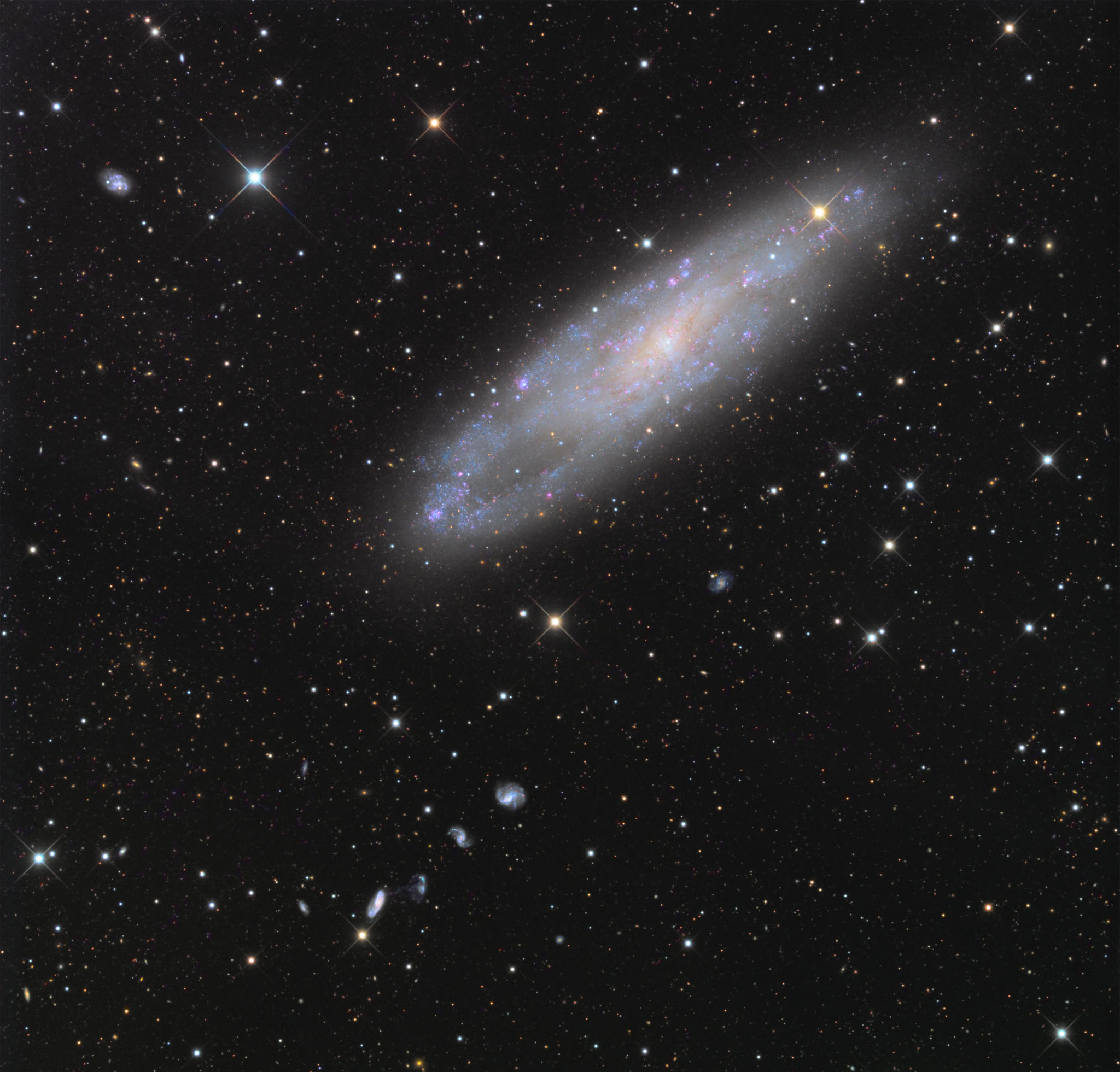
Posted on 09/05/2024 12:33:53 PM PDT by MtnClimber
Explanation: About 70,000 light-years across, NGC 247 is a spiral galaxy smaller than our Milky Way. Measured to be only 11 million light-years distant it is nearby though. Tilted nearly edge-on as seen from our perspective, it dominates this telescopic field of view toward the southern constellation Cetus. The pronounced void on one side of the galaxy's disk recalls for some its popular name, the Needle's Eye galaxy. Many background galaxies are visible in this sharp galaxy portrait, including the remarkable string of four galaxies just below and left of NGC 247 known as Burbidge's Chain. Burbidge's Chain galaxies are about 300 million light-years distant. NGC 247 itself is part of the Sculptor Group of galaxies along with shiny spiral NGC 253.
For more detail go to the link and click on the image for a high definition image. You can then move the magnifying glass cursor then click to zoom in and click again to zoom out. When zoomed in you can scan by moving the side bars on the bottom and right side of the image.

🪐 🌟 🌌 🍔
Great photo.
From optic or radio telescope source?
The web site of the “acquisition source” shows an optical telescope so I assume that is what it was.
Wow.
I want to be a rapper and I want to be known as NGC 24/7! And my entourage will simply be known as the Friends. Look out y’all! NGC 24/7 and Friends comin’ through!
NGC stands for Non Galactic Character. So I’d rather be one of the friends.
Is it the Hubble Space telescope? or is there another in space. Atmosphere makes it difficult to depend upon earth based telescopes.
Space based is sent by RF means back through our atmosphere.
I’ve been to Goldstone and to the VLA sight for radio telescopes. No part of that is optic.
I got the tour on the VLA sight when only 3 dishes were operational. Chief engineer gave me the tour. It was quite impressive technology. Especially interesting was the IF wave guide, it looked like a 2-1/2” ferrite tube with 1/4 wave length wall thickness. Inside was a spun copper wire lining to carry the signal. That was long long ago. At the time, they were trying to use cryogenic cooling on the front end of the receiver to keep the noise level down. Then they came along with GASFET’s that worked without super cooling. That was in the Early 1980’s. Don’t remember the exact year, it was before 1985. I moved back to Texas in 1986.
I love those types of sights. Have been a ham radio op for 49 years. Had some great friends while I was in NM.
One of the first galaxies I found with my first telescope. It’s well placed and my eyes were much better back then.
Add in NGC 253, NGC 55, and NGC 300 and you have the next group out from the Milky Way
Disclaimer: Opinions posted on Free Republic are those of the individual posters and do not necessarily represent the opinion of Free Republic or its management. All materials posted herein are protected by copyright law and the exemption for fair use of copyrighted works.